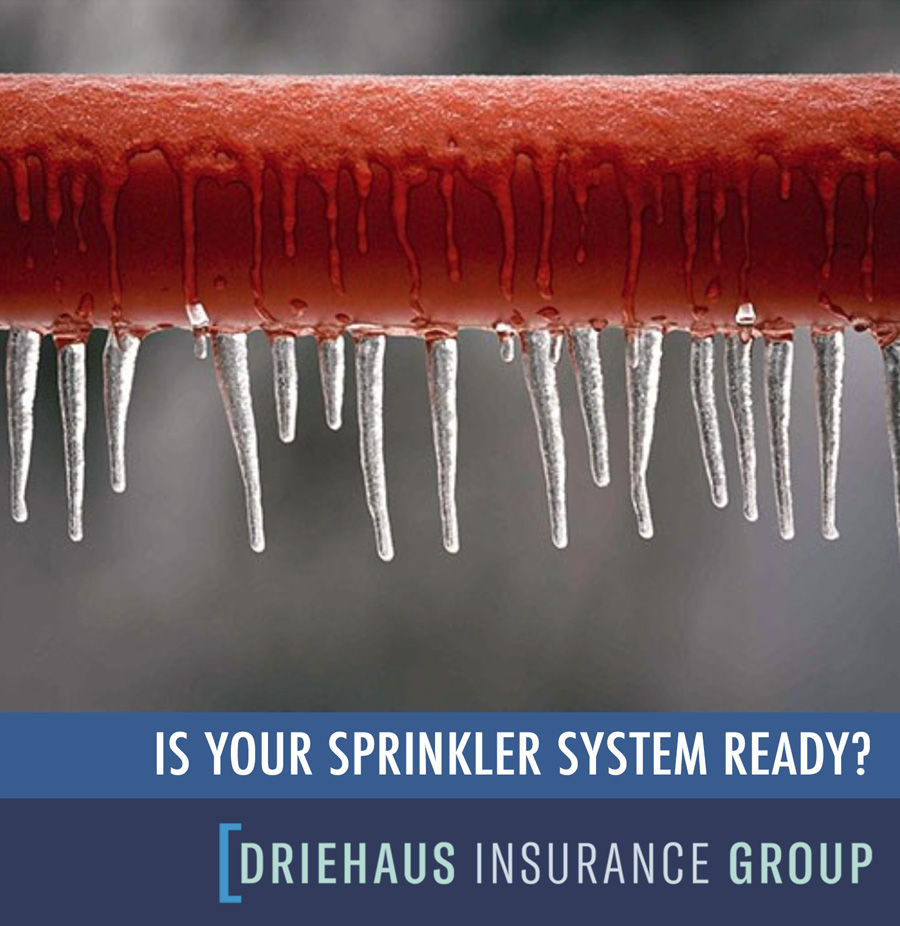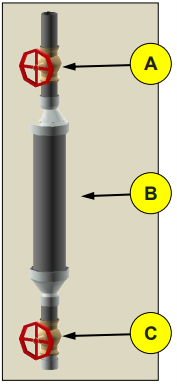Winter Prep for Fire Sprinkler Systems
- cbeckman98
- Dec 19, 2023
- 3 min read
Updated: Dec 20, 2023

Fire sprinkler systems need your attention to prevent a freeze event that can either impair protection or cause water damage. As winter sets in here are the things you should evaluate.
Building Temperature for wet pipe systems
Wet pipe sprinkler systems are filled with water and must be kept above 40 degrees F to prevent damage. If you have any areas of your building where the temperature may drop, consider improving heating, insulation or adding a low building temperature sensor to that area. Do not shut off or isolate sprinkler lines dues to cold weather. The system design depends on complete protection and a large fire in a non sprinklered area could overwhelm your system.
Many insurance policies contain a protective safeguards endorsement that requires you maintain the sprinkler system. If your policy has this provision, be sure to review the conditions related to impairing any protection.
Building Temperature for Dry Pipe Valve Enclosures
The dry pipe valve has water on one side of the valve body and this valve enclosure must be maintained at 40 degrees F to protect the valve. Check the heating systems for the dry pipe valve enclosure for proper operation and perform any needed maintenance or repair.
Add a low building temperature sensor to the valve enclosure. It is an economical way to avoid a significant freeze damage event. If the enclosure is alarmed, it can be inspected weekly. If no low temperature alarms are present, a daily inspection is needed.
The use of heat tracing on sprinkler systems is limited to systems that are specifically UL listed for use on fire sprinkler systems and that can be supervised to confirm the system is energized.
Auxiliary Drains on Dry Pipe Sprinkler Systems
Any area of the dry sprinkler system that does not drain back to the riser may trap water and be subject to freezing. There are auxiliary drains for these areas and the drains on a dry pipe system are equipped with a drum drip. This piping should be drained after any system test or activation and when cold weather is imminent. Part of the annual inspection should be identifying any areas that may trap water. Failure to do so can result in forzen pipes and water damage.

When a drum drip is in “normal” position, the top 1” valve (A) is open, allowing moisture to enter the condensate nipple, while the bottom 1” valve (C) is closed. To drain the condensate nipple (B), the top valve is closed then the bottom valve is opened to remove accumulated moisture.
When preparing for freezing temperatures, the auxiliary drains should be operated daily with the frequency of operation decreasing, depending on the discharge of accumulated water.
Quick opening devices where present, should be temporarily removed from service prior to draining the system Low Points.
If you are not comfortable with this process, schedule your sprinkler contractor for an inspection and ask for training on this routine system maintenance process.
The Driehaus Difference
Fire sprinkler systems provide the best protection for property and life safety. To be effective the systems must be properly maintained. Part of that maintenance is preparing the systems for winter weather. We can help you identify potential protection issues and work with you and your insurer to get the best protection and insurance rates for your property. Call us at 513-977-6860 or reach out to us on the internet at www.driehausins.com




Comments